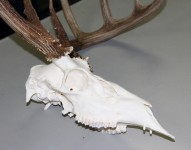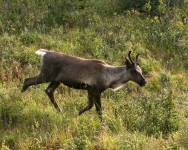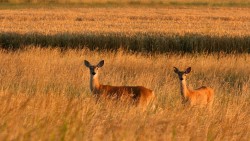Growing up in Minnesota, all I saw were whitetail deer. Then I moved to Idaho, where both mule deer and whitetail deer live. I wanted to figure out how to tell them apart as fast as my husband (which still doesn’t happen because he usually sees them first).
In Boundary County, typically mule deer live in the mountains while whitetail deer live in the Kootenai Valley. That worked until I saw mule deer feeding in the valley farm fields and whitetail deer in the lower elevations of the mountains.
My go-to list for telling whitetail and mule deer apart includes antlers, tail and ears. However, there are several ways to tell them apart–especially for the does who don’t sport antlers.
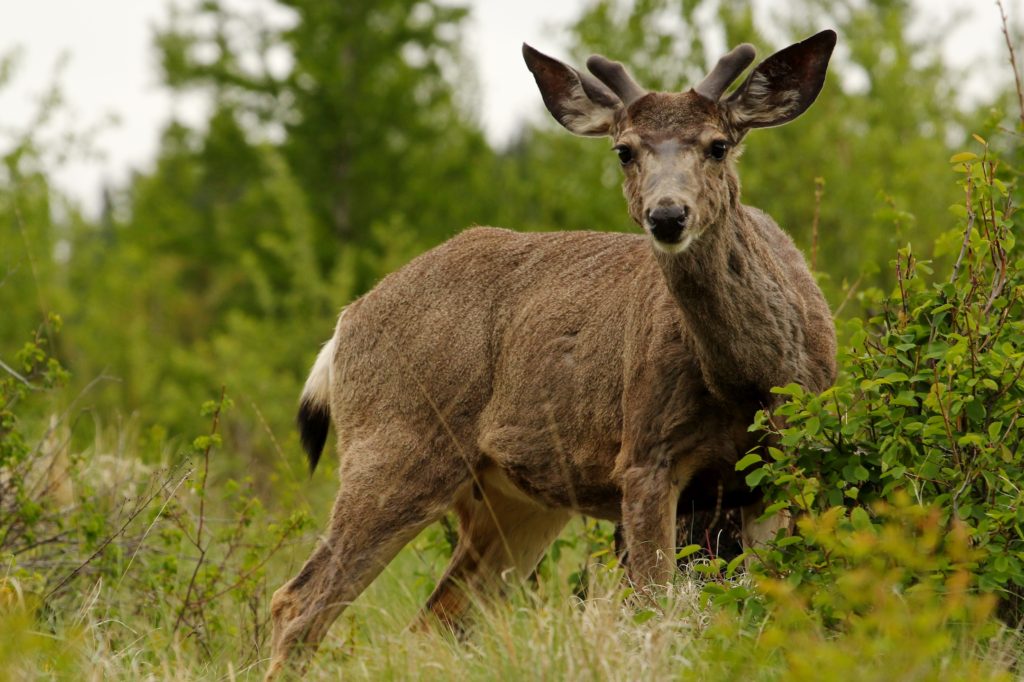
Face
-Mule deer have a mostly white face from the eyes to nose.
-Whitetail deer have a mostly brown face but with white circles around the eyes and nose.
Ears
-Mule deer have large mule-like ears that tend to be at a 30-degree angle on the head and half the length of their head.
-Whitetail deer have smaller, rounder ears that stand more erect and are one-third the length of their head.
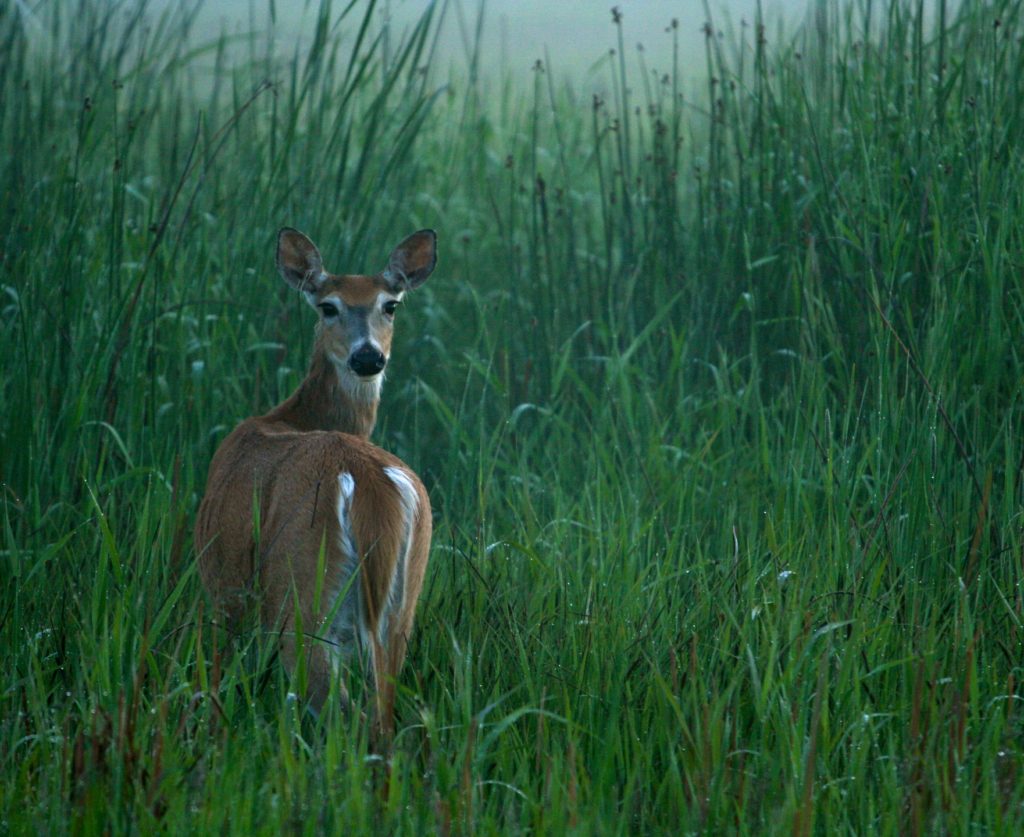
Tail
-Mule deer have a white tail with a black tip that partly covers the large white rump patch. When the mule deer’s tail is down, a lot of white is visible.
-Whitetail deer have a fat, brown tail that is white when lifted. When the whitetail deer’s tail is down it mostly covers the white rump patch, so the rump is mainly brown.
Antlers
-Mule deer have bifurcated antlers (meaning as they grow they fork), each fork grows and each fork splits again to create more tines.
-Whitetail deer have a main beam and the antler tines grow upward from the one main beam.
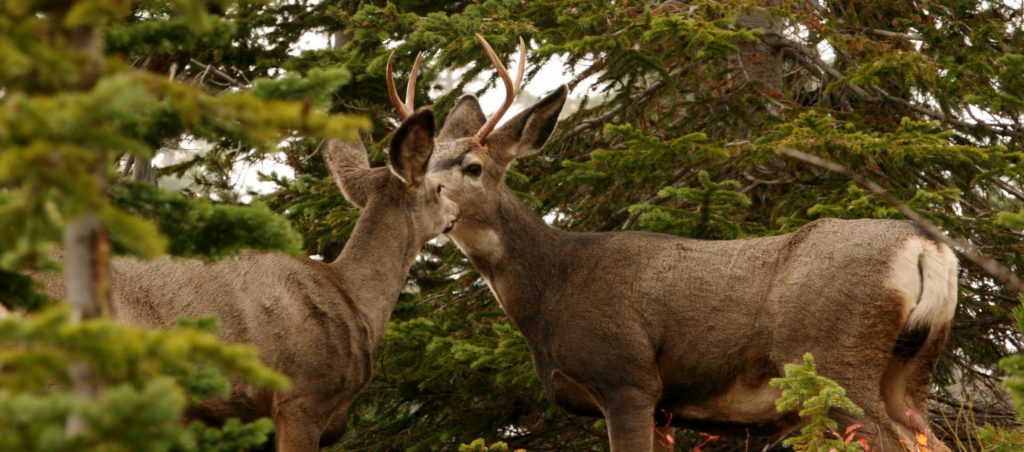
Fur color
-Mule deer are grayish-brown in the summer and more gray in the winter.
-Whitetail deer are reddish-brown in the summer and more gray in the winter.
Belly
-Mule deer have a grayish-brown belly like the rest of the body.
-Whitetail deer have a white belly underneath.
Movement
-Mule deer trot or gallop when alarmed but also a “stot” or “pronk” to escape. Stotting/pronking is a stiff-legged hop with all four feet leaving the ground at the same time.
-Whitetail deer run fast and utilize bounding leaps to escape predators.
Size
-Mule deer tend to be larger in size.
-Whitetail deer tend to be smaller than mule deer.
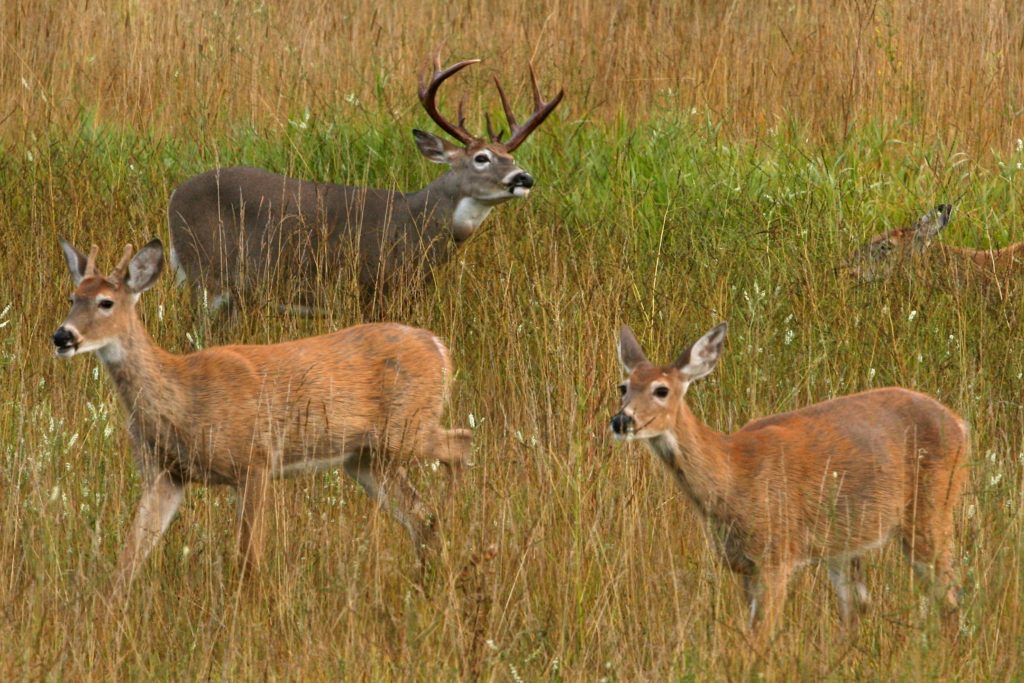
Identifying a deer is easier if only one species lives in the area but the range of whitetail deer and mule deer overlaps (as well as a few other species of deer with smaller ranges).
Mule deer (Odocoileus hemionus) range from Mexico to northern British Columbia and southern Yukon Territory; from the Pacific Coast to the Dakotas; and some maps show they range into Minnesota and Iowa.
Whitetail deer (Odocoileus virginianus) live in nearly all of the contiguous 48 states except California and Nevada. They also range into Mexico and southern Canada.
What deer species live in your area?
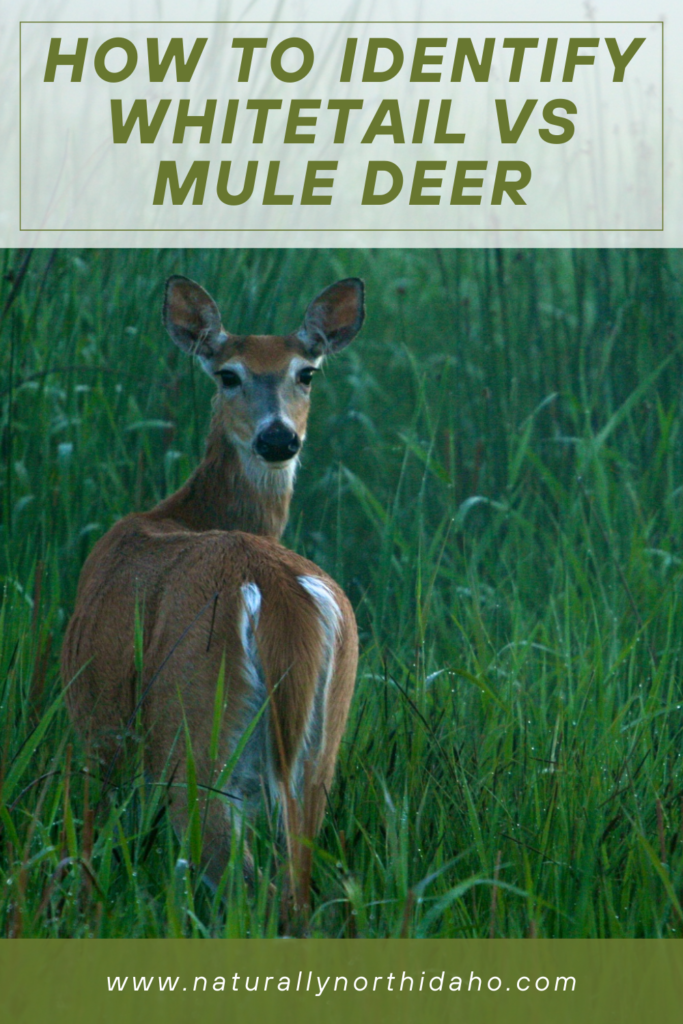
Updated January 2024. Originally published June 2020.


